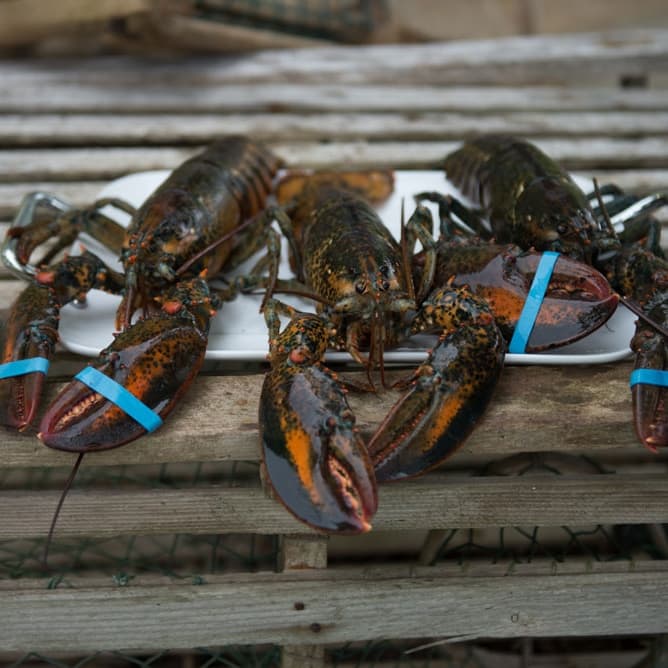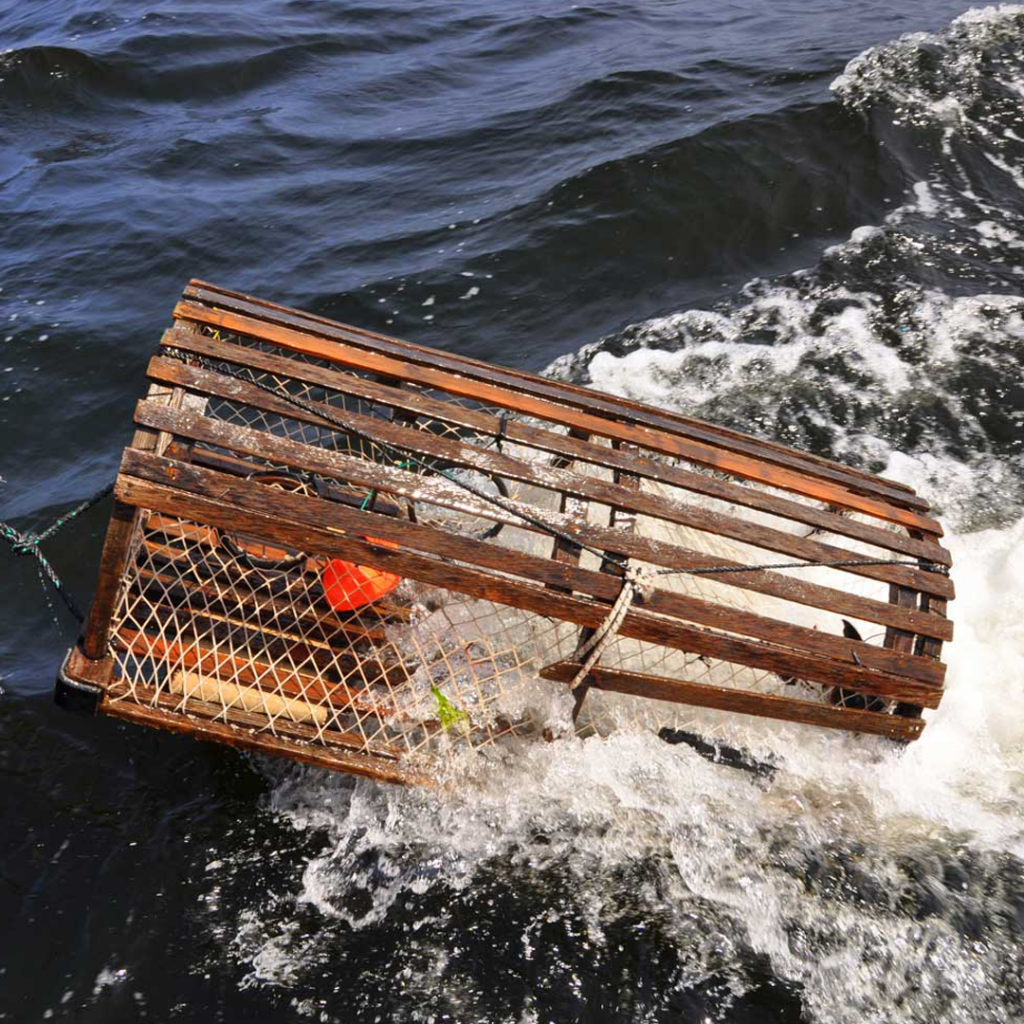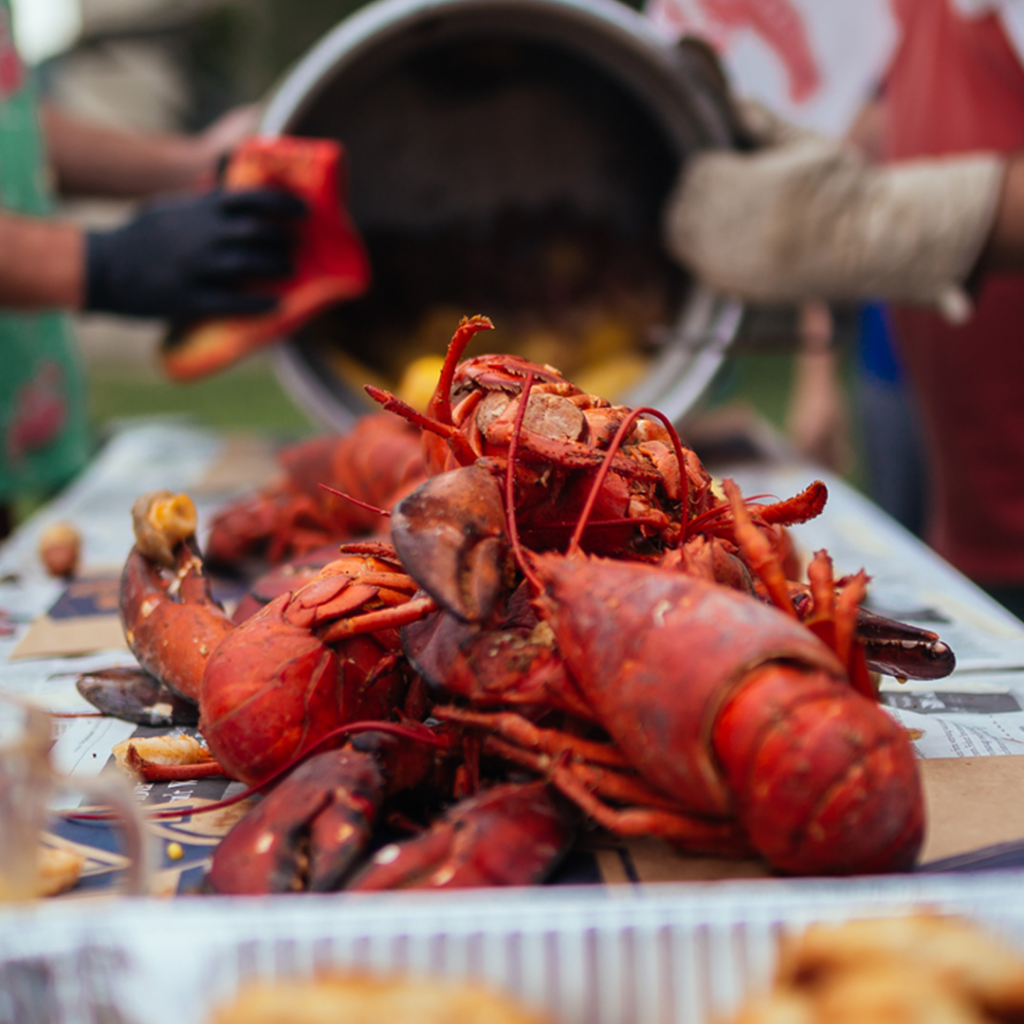DID YOU KNOW: When a lobster is fully cooked, a leg or antenna will slip out easily when pulled.
Boil (Whole Live Lobster)
Fill a pot with enough water to cover your lobster and season with 250mL of sea salt per 4L of water. Bring to a boil. Plunge the lobster headfirst into the boiling water. Cover and simmer according to the lobster’s weight, starting your timer once the water has returned to a boil.
Steam (Whole Live Lobster)
Add a steaming rack to your pot and add water to just below it. Bring to a boil with a tablespoon of sea salt. When boiling and steamy, place live lobsters in the pot head first, cover and steam according to the lobster’s weight.
If serving cold, plunge your boiled or steamed lobsters into an ice bath to stop the cooking process. Lobsters can be refrigerated on their backs to preserve juices.
To prep a whole lobster for broiling, grilling or poaching, parboil it for 1-2 minutes in well salted water. If you’re continuing to cook in shell, place the parboiled lobsters in an ice bath to stop the cooking process. Otherwise, remove the meat from the warm shell to continue. Store partially cooked lobster on their backs to preserve juices.
Broil (split lobsters)
Lay split lobster on a broiling pan and brush lightly with butter. Place about four inches below the flame/element for about ten minutes. Use your own marinade or basting sauce or remove the meat and combine with a stuffing.
Barbecue (split lobsters)
Brush the bottom of the lobster shells with olive oil or butter. Place on the barbecue meat side up at medium-high. Brush meat with oil and sprinkle with salt and pepper. Cover and grill until just solid white in the thickest portion of tail, seven to nine minutes.
Poach (pre-cooked meat)
Poach pre-cooked lobster meat in a simmering sauce for 2-3 minutes to heat it. Try a simple blend of lemon zest, parsley or chives, a dash of garlic and white wine—or try orange zest, dill, pepper and orange juice.
With all the forms of Canadian lobster, from cooked and shelled meat, to high-pressure processed whole raw lobster to raw tails, the only limit is your creativity!







